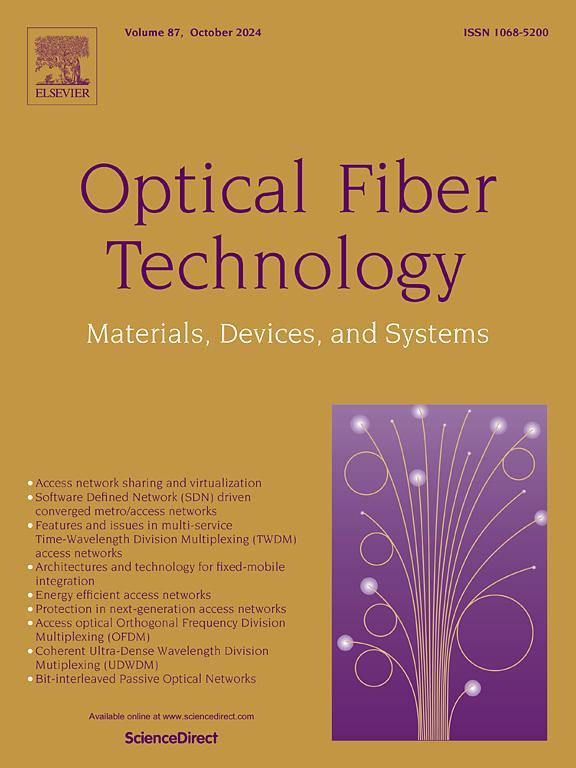Solar dual-end-pumped single crystal fiber laser with conical reflector
IF 2.7
3区 计算机科学
Q2 ENGINEERING, ELECTRICAL & ELECTRONIC
引用次数: 0
Abstract
To enhance the output power and solar-laser conversion efficiency of a solar-pumped single crystal fiber (SCF) laser, we propose a dual-end-pumped configuration based on a hollow conical reflector. The three-stage solar concentrator consists of parabolic mirrors, 3D-CPCs, and hollow conical reflector, in which the SCF is placed. The DDE is used to establish an information exchange channel between Matlab and TracePro to optimize the position of the SCF based on simulated annealing algorithm. For the same sunlight-receiving area (1.2 m2), ray tracing with Tracepro shows that the solar power absorbed by the dual-end-pumped SCF (Φ1 × 100 mm, 1at.% doping concentration) is enhanced by 48.03 % compared to the single-end-pumped configuration when the third-stage concentrator is a hollow cylindrical reflector. When the third-stage concentrator is a 2-stage conical reflector, the solar power absorbed by the SCF can be effectively improved and reach 140.81 W. Solving the rate equations and the power transmission equations, the maximum laser output power and the solar-laser conversion efficiency of the solar pumped SCF laser are 47.84 W and 3.96 %.
锥形反射面太阳能双端泵浦单晶光纤激光器
为了提高太阳能泵浦单晶光纤激光器的输出功率和转换效率,提出了一种基于空心锥形反射镜的双端泵浦结构。三级太阳能聚光器由抛物面镜、3d - cpc和空心锥形反射镜组成,其中放置了SCF。利用DDE在Matlab和TracePro之间建立信息交换通道,基于模拟退火算法对SCF的位置进行优化。对于相同的阳光接收面积(1.2 m2),用Tracepro进行光线追迹显示,双端泵浦SCF吸收的太阳能功率为(Φ1 × 100 mm, 1at)。当第三级浓缩器为空心圆柱形反射器时,与单端泵浦结构相比,提高了48.03%。当第三级聚光器为2级锥形反射器时,可有效提高聚光器吸收的太阳能功率,达到140.81 W。通过对速率方程和功率传输方程的求解,太阳泵浦SCF激光器的最大激光输出功率为47.84 W,太阳-激光转换效率为3.96%。
本文章由计算机程序翻译,如有差异,请以英文原文为准。
求助全文
约1分钟内获得全文
求助全文
来源期刊

Optical Fiber Technology
工程技术-电信学
CiteScore
4.80
自引率
11.10%
发文量
327
审稿时长
63 days
期刊介绍:
Innovations in optical fiber technology are revolutionizing world communications. Newly developed fiber amplifiers allow for direct transmission of high-speed signals over transcontinental distances without the need for electronic regeneration. Optical fibers find new applications in data processing. The impact of fiber materials, devices, and systems on communications in the coming decades will create an abundance of primary literature and the need for up-to-date reviews.
Optical Fiber Technology: Materials, Devices, and Systems is a new cutting-edge journal designed to fill a need in this rapidly evolving field for speedy publication of regular length papers. Both theoretical and experimental papers on fiber materials, devices, and system performance evaluation and measurements are eligible, with emphasis on practical applications.
 求助内容:
求助内容: 应助结果提醒方式:
应助结果提醒方式:


